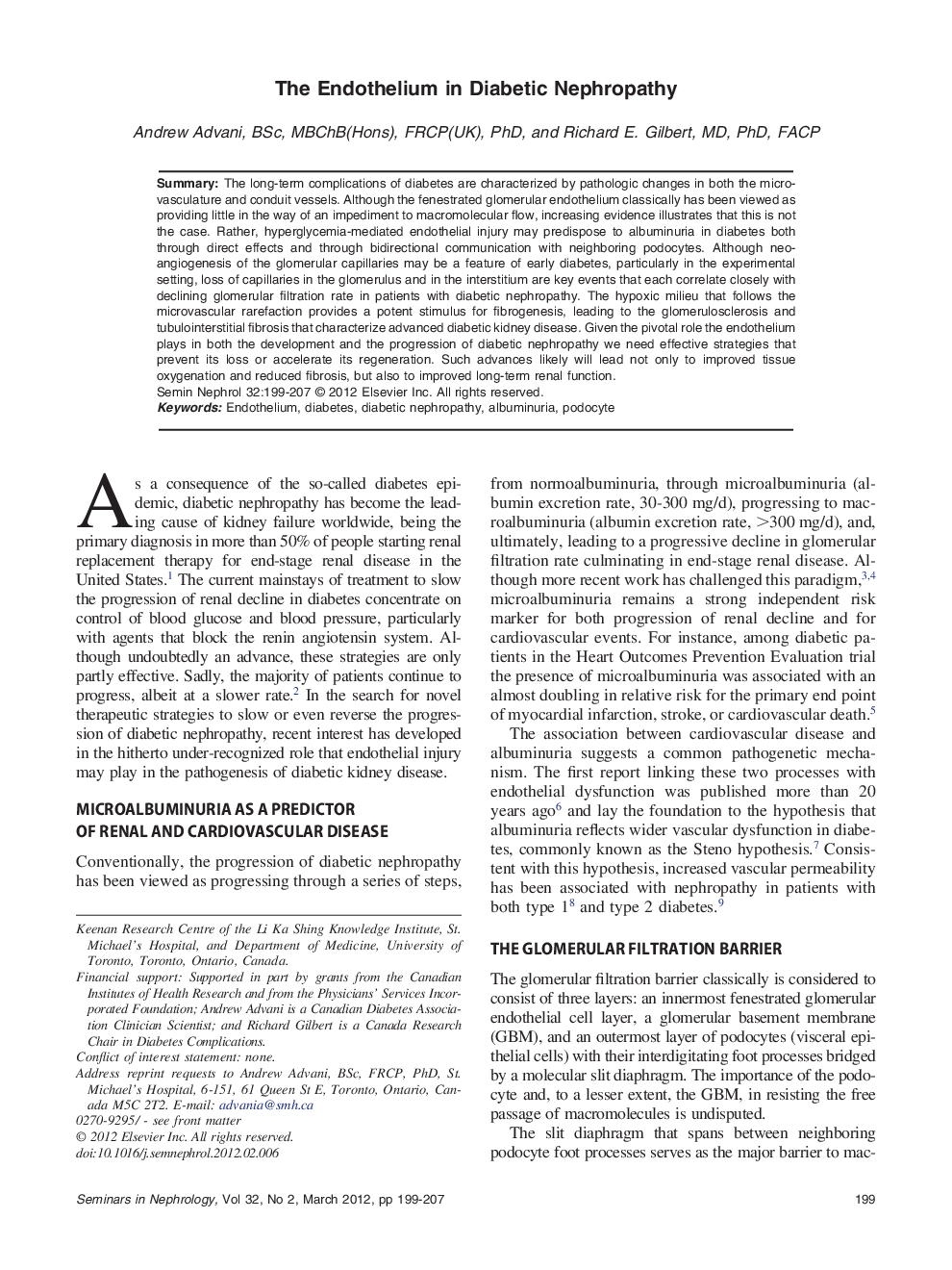| Article ID | Journal | Published Year | Pages | File Type |
|---|---|---|---|---|
| 3896529 | Seminars in Nephrology | 2012 | 9 Pages |
SummaryThe long-term complications of diabetes are characterized by pathologic changes in both the microvasculature and conduit vessels. Although the fenestrated glomerular endothelium classically has been viewed as providing little in the way of an impediment to macromolecular flow, increasing evidence illustrates that this is not the case. Rather, hyperglycemia-mediated endothelial injury may predispose to albuminuria in diabetes both through direct effects and through bidirectional communication with neighboring podocytes. Although neo-angiogenesis of the glomerular capillaries may be a feature of early diabetes, particularly in the experimental setting, loss of capillaries in the glomerulus and in the interstitium are key events that each correlate closely with declining glomerular filtration rate in patients with diabetic nephropathy. The hypoxic milieu that follows the microvascular rarefaction provides a potent stimulus for fibrogenesis, leading to the glomerulosclerosis and tubulointerstitial fibrosis that characterize advanced diabetic kidney disease. Given the pivotal role the endothelium plays in both the development and the progression of diabetic nephropathy we need effective strategies that prevent its loss or accelerate its regeneration. Such advances likely will lead not only to improved tissue oxygenation and reduced fibrosis, but also to improved long-term renal function.
